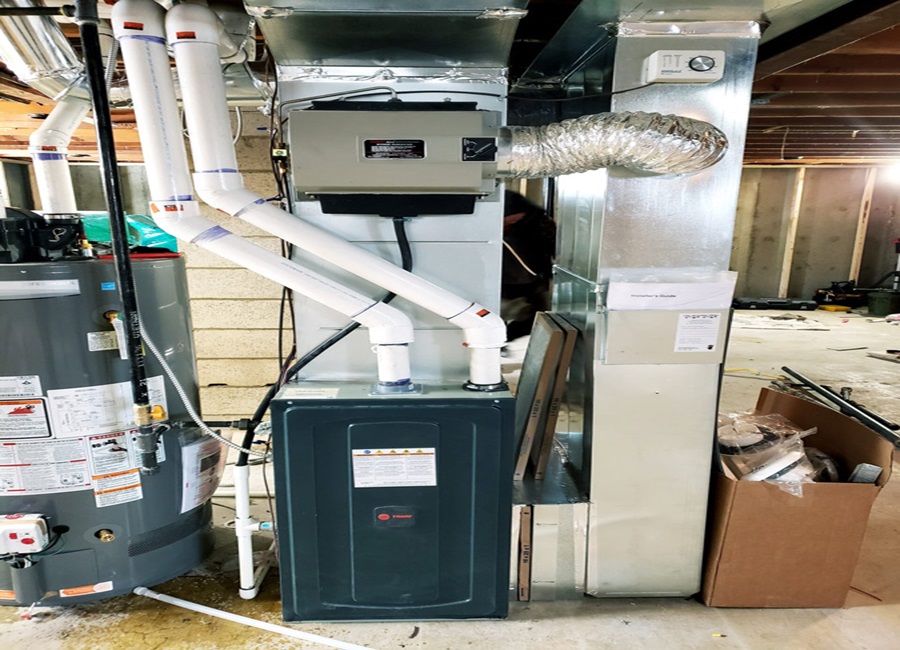So, let’s talk about these factors.
Size of the Unit
The larger the area you need to cool, the larger the unit you will need. Air conditioners are measured in tons and use 12,000 BTU (British Thermal Units) of energy per ton to operate. The smallest units for homes can start at a ton and a half in size or 18,000 BTU’s and the largest units can be as big as 6 tons or 72,000 BTU’s.
Based on the square footage of your home, the following is a guideline you can use:
- Up to 1200 square feet requires a 1-2 ton air conditioner
- Up to 1800 square feet, choose a 2-3 ton air conditioner
- Up to 2500 square feet, select a 3-4 ton air conditioner
- More that 2500 square feet requires a 4 ton or larger unit
Lastly, to be cost-efficient, the AC unit must be the appropriate size for your current furnace.
The Energy Efficiency Level
An energy-efficient unit will cost you more to purchase. An air conditioner’s efficiency is measured by its SEER (Seasonal Energy Efficiency Rating). Units with a higher SEER rating may cost more up front, but they’ll usually have lower operating costs. All currently installed AC units must have at least a 13 SEER rating. If your unit was installed before 2006, consider updating it to take advantage of new energy- saving technology.
A Two-Stage, Single Stage or a Variable Speed AC Unit
Air conditioners, like furnaces, come with the option of having variable speeds that enables them to adjust the cooling levels in your home.
Two Stage Units:
Two-stage models have a low and high speed. When the weather is not super-hot, the AC can use its lower stage to dehumidify without having to make extreme changes in temperature. This will make your home more comfortable and will save you on your electricity bill because it requires less energy.
Single Stage Units:
The single-stage models have only one speed, so they tend to blast cold air regardless of how much is needed. This tends to produce hot and cold spots throughout your home with lots of humidity.
Variable Speed Units:
Variable-speed air conditioners run continually. That sounds like a recipe for high energy consumption, but it isn’t because they draw low levels of electricity consistently without the high-power start-ups. Also, variable-speed air conditioners control moisture more effectively, so the thermostat doesn’t have to be set as low, and they are ideal for allergy sufferers.
The Warranty
Most air conditioners come with warranties that are fairly similar. They usually include a 10-year warranty on parts and 1 year on labour. Getting an additional 10-year warranty for labour will have an extra cost initially, but it could save you money over the life of your unit.
A great investment is a warranty that covers regular maintenance
Additional Costs & Considerations
Unit Pads:
A new air conditioner needs an even, well-ventilated space to sit on.
Electrical Upgrades:
Most central air conditioners require a dedicated 240V 20A circuit.
Duct Upgrades:
Older, poorly insulated ductwork decreases the efficiency of a new air conditioner. Recommended upgrades, including removing old ductwork, is a one-time investment —that will pay for itself in energy savings.
Insulation:
Having a well-insulated home lowers both heating and cooling costs, so there’s no better time to add insulation than when you’re installing a new air conditioner.
Permits and Fees
Adding a central air conditioner requires a permit and a safety inspection ensures it meets building codes.
Disposing of an old air conditioner and ductwork is also costly. The costs to capture environmentally hazardous refrigerant — that’s never a DIY job — and dispose of bulky equipment will have additional costs.
Plumbing
When adding central air to a house, in order to prevent water damage, a drain line for condensation from the air handler is required.
Final Thoughts
If you are still wondering if installing an AC is right for you, contact us. We provide free on-site quotes to ensure that you are getting the best air conditioning unit for your needs and budget.
MORE INFO ON AIR CONDITIONERS CLICK HERE




